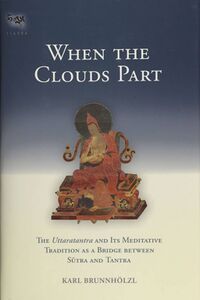Explore: Difference between revisions
M.Koblensky (talk | contribs) m (Text replacement - "commons.tsadra.org/images-commons" to "commons.tsadra.org/images") |
((by SublimeText.Mediawiker)) |
||
| (One intermediate revision by one other user not shown) | |||
| Line 84: | Line 84: | ||
}} | }} | ||
</div> | </div> | ||
</div> | |||
<div> | |||
{{FeaturedItem | |||
|page=2023_Buddha-Nature_Conference_Kathmandu | |||
|title=Buddha-Nature Conference, Shechen Monastery, Kathmandu, June 1–3, 2023 | |||
|description=[[Image:Kathmandu-2023-June3-22.jpg|450px|class=h-auto p-0 col col-sm-6 col-lg-4 float-sm-right mt-2 mb-2 mb-sm-0 ml-sm-3 rounded|link=2023_Buddha-Nature_Conference_Kathmandu|]]In connection with the Buddha-Nature resource project, Tsadra Foundation hosted a three-day conference from June 1–3, 2023 by inviting some 20 speakers of outstanding erudition representing the different Tibetan Buddhist traditions to discuss buddha-nature, related texts, theories, and practices. The conference was attended by over two hundred scholars from 32 monastic learning centers in and around Kathmandu, broadcast live and the proceedings were recorded. The conference proved to be a lively and stimulating debate from the very first presentation! Great minds lectured and debated on our true nature of compassion and wisdom, using airplanes, pet bottles, and bouquets as examples to argue or counterargue that all beings or all things have the luminous buddha-nature. The conversations were marked by penetrating intellectual acuity, a robust sense of humor sending forth frequent bursts of laughter, and a deep sense of mutual respect and humility, thus making a significant contribution to the understanding of buddha-nature. <br> <span class="float-right">[[2023_Buddha-Nature_Conference_Kathmandu|See all presentations <i class="fad fa-long-arrow-right rotate-45 fa-xs"></i>]]</span> | |||
|textclasses=vienna-gradient px-2 px-lg-5 pt-2 pb-3 | |||
|additionalcontent=<div class="border-top-redfade py-4 d-flex justify-content-center flex-wrap row"> | |||
{{#ask: [[Media/Lopon_Karma_Phuntso's_Introduction_of_Kyoton's_Life_and_Works]]OR[[Media/Khenpo_Tenpa_Tshering_at_the_2023_Buddha-Nature_Conference]]OR[[Media/Geshe_Lobsang_Gyatso_at_the_2023_Buddha-Nature_Conference]] | |||
|?Fulltitle | |||
|?Performer | |||
|?VideoNumberInEvent | |||
|?TileDescription | |||
|?TilePhoto | |||
|?MediaContentType | |||
|?citation | |||
|?BuNayTopicTags | |||
|?PerformerRaw | |||
|sort=VideoNumberInEvent | |||
|order=asc | |||
|format=template | |||
|template=SessionTile | |||
|userparam=col-md-6 col-lg-4 text-75 | |||
|link=none | |||
|limit=150 | |||
}} | |||
</div> | |||
}} | |||
</div> | </div> | ||
<div> | <div> | ||
| Line 113: | Line 141: | ||
}} | }} | ||
</div> | </div> | ||
<div> | |||
{{FeaturedItem | {{FeaturedItem | ||
|page=Old Topic, New Insights: Buddha-Nature at the Crossroads between Doctrine and Practice | |page=Old Topic, New Insights: Buddha-Nature at the Crossroads between Doctrine and Practice | ||
| Line 141: | Line 169: | ||
}} | }} | ||
</div> | </div> | ||
<div> | |||
<div class="row"> | <div class="row"> | ||
<div class="col-lg-9 pr-lg-0"> | <div class="col-lg-9 pr-lg-0"> | ||
Latest revision as of 12:49, 13 December 2024

See all presentations
Karma Phuntsho
Khenpo Tenpa Tshering
Geshe Lobsang Gyatso

See all presentations
Klaus-Dieter Mathes
Ngawang Jorden
Jacqueline Stone

Panel Description: Continued scholarly publications, Buddhist teaching events, the recent development of online buddha-nature resources, and the associated Tathāgatagarbha symposium in Vienna in 2019 have spurred greater interest in the topic both within Tibetan Buddhist traditions and among other spiritual traditions. This panel brings together experts in an attempt to refine and deepen our understanding of buddha-nature both in terms of theoretical interpretations and practical applications in Tibetan Buddhist communities, past or present.
The main objective of the panel focuses on the interplay between points of doctrine and the practice of the path from the perspective of various Tibetan traditions and scholars. Contributions examine the interpretations of doctrines of tathāgatagarbha originally found in Indian scriptural sources. The methodological approach of these contributions range from historical-philological investigations to ethnographic research and comparative analysis.
See all presentations
Christopher Jones
Casey Forgues
Yaroslav Komarovski
The writer-in-digital-residence is the recipient of a grant designed to support Tsadra Foundation’s Buddhist literacy projects that connect the larger public with academic research and advance understanding of specific aspects of Tibetan Buddhist traditions. Writers help to curate this online resource and write essays on the history, philosophy, and practices associated with buddha-nature teachings and tathāgatagarbha theory in Tibet. These essays are addressed to an audience of educated readers of Buddhist materials and Buddhist practitioners.
Lopen (Dr) Karma Phuntsho is one of Bhutan’s leading intellectuals. He has finished monastic training in Bhutan and India before he pursued a M.St in Classical Indian Religions, and D.Phil in Oriental Studies at Balliol College, Oxford. He was a researcher at CNRS, Paris, a Research Associate at Department of Social Anthropology and the Spalding Fellow for Comparative Religion at Clare Hall, Cambridge University, and Research Consultant at University of Virginia. An author of over hundred books and articles including the authoritative History of Bhutan and Mipham’s Dialectics and the Debates on Emptiness, he speaks and writes extensively on Bhutan and Buddhism. Read a complete bio.
Tsadra Foundation is excited to support Karma Phuntsho in developing a series of online events called "Conversations on Buddha-Nature". This podcast-like project will be space for stimulating and inspiring conversations on Buddha-Nature and related subjects. As a part of the Buddha-Nature Project of the Tsadra Foundation, Karma Phuntsho will host conversations with a Buddhist leader, influencer or expert each month on the theories and practices of Buddha-Nature, which will be live on Facebook. An exercise of mindful listening, right speech, and wholesome exploration of meaning and nature of life, these conversations aim to enhance the understanding and awareness of Buddha-Nature and promote the ethos of innate goodness and positive perception.
Ringu Tulku
Tokpa Tulku
I.28
རྫོགས་སངས་སྐུ་ནི་འཕྲོ་ཕྱིར་དང་། །
དེ་བཞིན་ཉིད་དབྱེར་མེད་ཕྱིར་དང་། །
རིགས་ཡོད་ཕྱིར་ན་ལུས་ཅན་ཀུན། །
རྟག་ཏུ་སངས་རྒྱས་སྙིང་པོ་ཅན། །
Since suchness is undifferentiable,
And because of the disposition,
All beings always possess the buddha heart.
संबुद्धकायस्फरणात् तथताव्यतिभेदतः
गोत्रतश्च सदा सर्वे बुद्धगर्भाः शरीरिणः
佛法身遍滿 真如無差別
皆實有佛性 是故說常有
Click to view all verses





